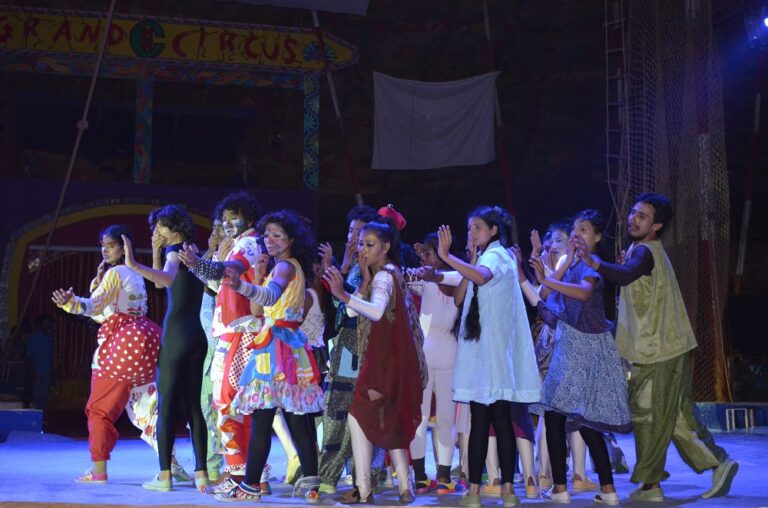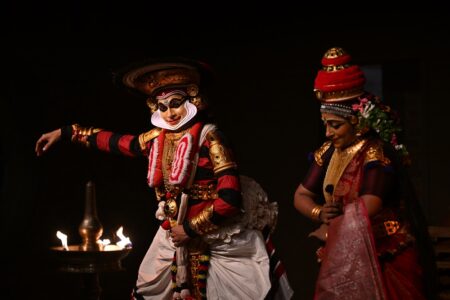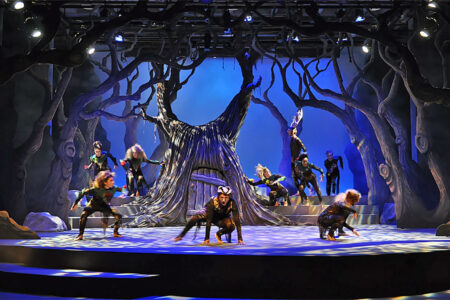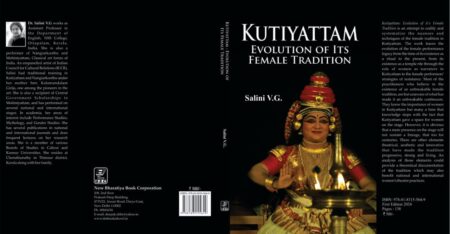Why audience in the show and the performing art on the stage need to build a connection.
Indian circus industry has had a tumultuous past. Several reasons such as lack of safety measures, poor quality of life inside the tent, training exercises, absence of any physical therapy and more importantly apathy from the governing body have all contributed to the state of the circus industry.
In fact, for generations, the training system going on in the Indian circus tent was not known outside. To my knowledge, nobody even wrote anything about their surreptitious training method. The behind-the-scenes story inside the tent was quite different from what the acts showed to the world. Even when bones were broken due to the fall, proper care wasn’t made available to the injured individuals. There was no way to preempt the injury, no coaches present and no rules were laid out to follow.
A wholistic approach to safety
Circus companies based in western countries, for instance, employ a sports medicine specialist, a coach, theatre professionals for better results. In fact, these circus companies are interweaving with sports coach and theatre artistes these days. Cirque de Soleil of Canada is one such company that is putting a great emphasis on safety nets and healing therapies.
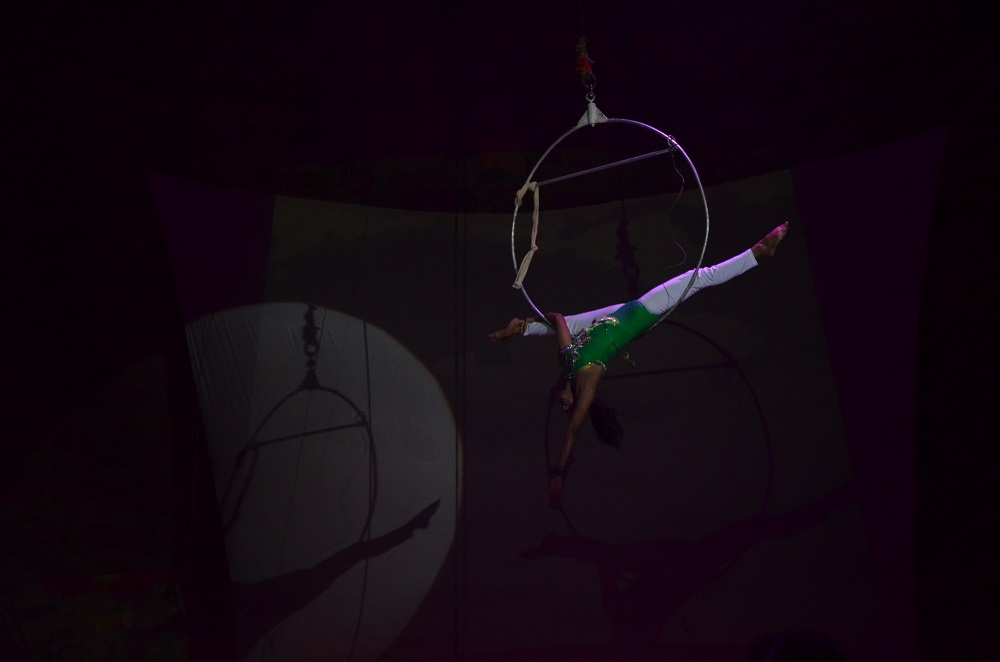
In the old Soviet Union, circus was nationalized, and strict rules and regulations were implemented. They even started an academy exclusively for training and teaching circus arts. Due to these measures, Russian circus is still popular even after the fall of Soviet Union.
The role of an audience
Any popular performing art aims to put up a show so that the audience enjoy their performance. I believe, no popular art can survive without audience. However, in the case of ritual performing arts, the notion of audience may be different. For example, even without a good strength of onlookers, a Kudiyattam performer ritually performs his role looking at the wick of the oil lamp, which for him is a devotional duty. This is his profession. And this has been the tradition in Kudiyattam.
Ruling out such exceptions, one can say that without spectators, without their participation and without a give-and-take interaction between the performer and the spectators, no art has any significance. All the performing art forms including theatre are communicating with the audience. If this communication is missing and the art is unable to establish this relationship, it leads to a crisis for the art and for the performance.
Simply put, the challenge of any popular art is that if the audience does not comprehend the show, then the purpose is lost.
Unity and camaraderie
We discussed in earlier articles how Chandran of Grand Circus offered to lend us 25 young circus artistes for the collaboration between National School of Drama and the circus industry. The medium of training inside the circus tent was always broken Hindi as the circus artistes hailed from different parts of South Asia.
Every morning at 4:30 a.m. students were expected to have a cup of black tea and then head straight to the circus tent for the morning practice. They would arrive at the circus ring to witness how animals were being prepped to getting trained in the circus ring. The young circus artistes would be already waiting outside the ring for their turn.
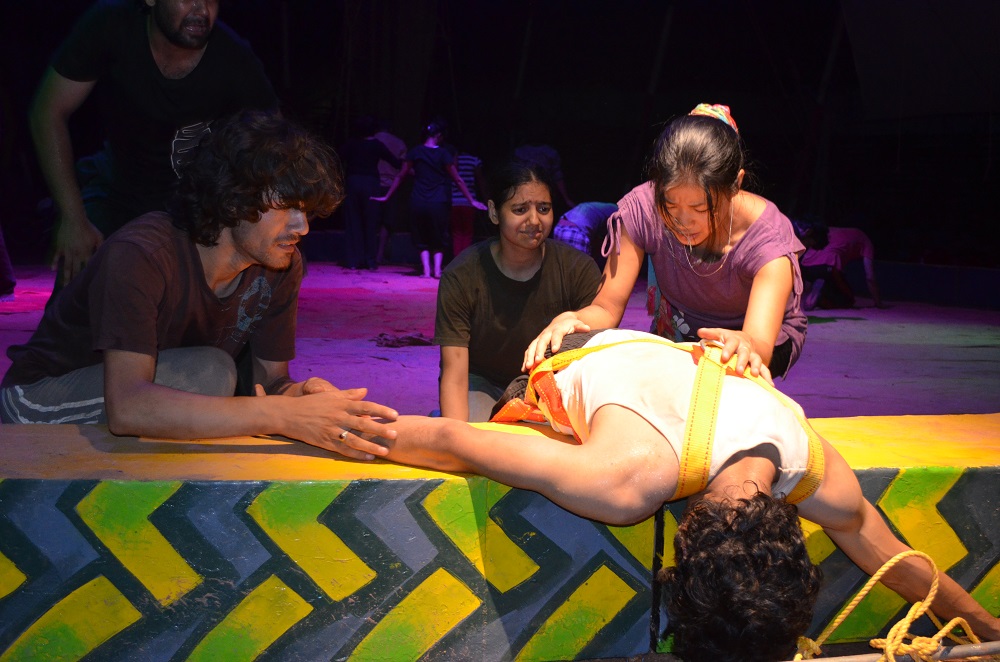
At 5:00 a.m., the circus artistes along with NSD students would begin practicing a long list of acts such as Flying Trapeze, Parade, Russian Stick Balance, Clown Chair, Russian Rope Dance, Comic Juggling, Boneless Act, Statue Acrobat, Chinese Shaking Ladder, Hoola Hoop, Foot Juggling, Dog Act, Sensational Cycle Act, African Fire Dance, Group Cycling, Sari Act, Titanic Act, Pyramid Act, Sea Saw Acrobat, Spitting Water Stream Act, Globe of Death, Rope Walk among others.
The training ground
All the NSD students were told in the first week to try all the acts. According to their body and inner spirit, the students were supposed to select one act and use the rest of the time (three weeks) to learn that act perfectly from the trainers.
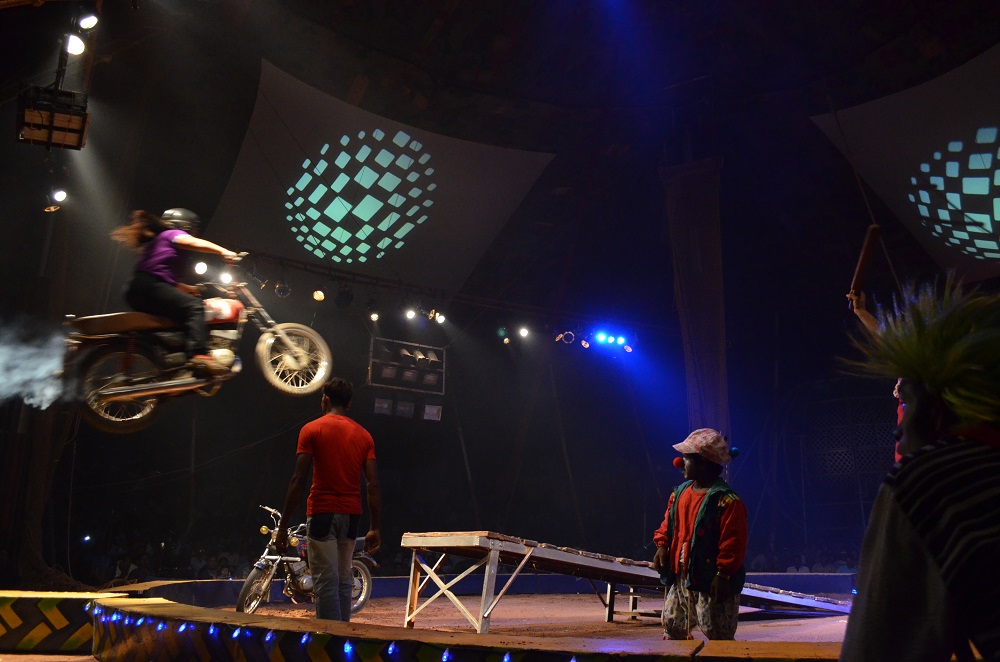
One week clown workshop was conducted for the circus clowns and student-actors for the performance by Chili-based musician Claudio Clavija. Simultaneously another workshop was conducted for acting and body training for the entire artistes in the project by Thrissur-based actor and trainer Martin John C.
Training was also given in animation and puppet making by Sugathan Parayantharayil. Before joining the circus tent, NSD students also witnessed performances of Kathakali, Mohiniyattam and Theyyam, in different parts of Kerala. A four-week movement and choreography workshop along with rehearsals were given to the entire artistes by the Samudra’s Madhu Gopinath and Vakkom Sajeev in Trivandrum.
The stringent schedule
It was a packed schedule. The day started at 5:00 in the morning – the NSD students learned and practiced the selected circus act and the circus artistes practiced their regular sets. This went on till 7:00 am and 7-8 a.m. was breakfast time. Students were requested to try the local food as this pedagogy is not only for practice for the body but also helped them push boundaries of their senses especially taste, smell and touch.
Once they were done with the breakfast, it was time to learn and relearn choreographic practices for an hour. Later from 9 a.m. till noon the schedule focused on improvisations and rehearsals. The students and artistes then dispersed for the lunch break which was from 12-2 p.m.
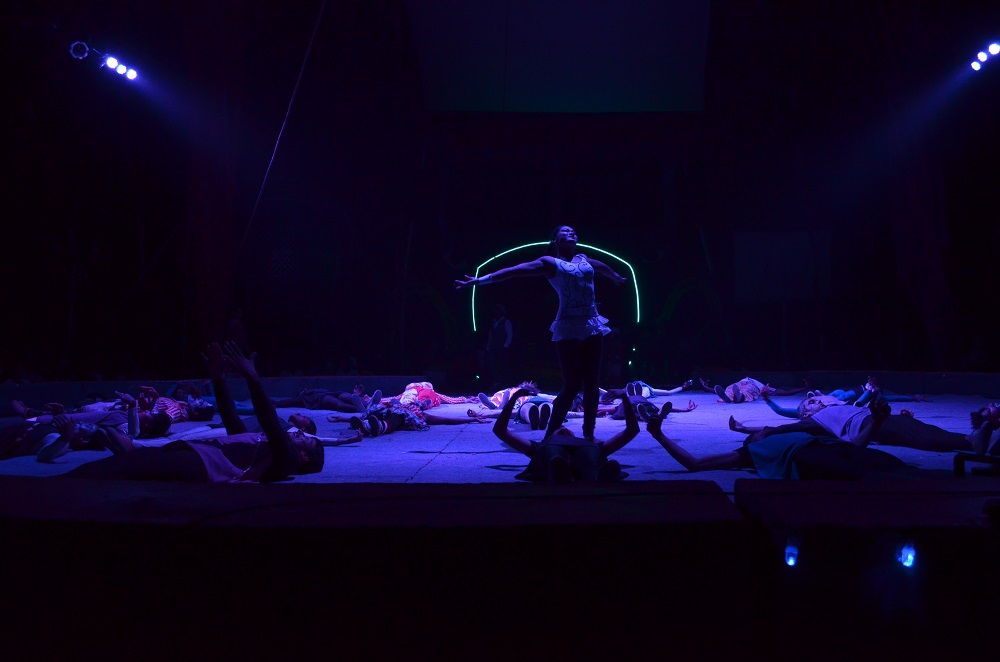
Once the practice sessions culminated at noon, the circus artistes rushed back to the ring for the daily matinee show 1-3.00 pm. They had two more shows – 4-6 p.m. called the first show and 7-9 p.m. labelled the second show.
Simultaneously, NSD students attended classes on history and theory of circus as a popular art form during the matinee show. Later they focused on developing script through improvisation from 4-6 p.m followed by movement classes for flexibility from 6-9 p.m.
Gradually as the students trained in their acts and gained confidence, they started performing alongside the circus artistes at some of the circus shows. There were many students who developed meaningful relationship with several circus artistes and some started living with them in the tents. All rehearsals were conducted in the circus ring.
The students from the NSD were allotted separate tents for living, rest rooms, wardrobe, make-up, changing spaces, etc. We also got exposed to the several circus acts and tricks as well as wonderful life lessons inside the tent. In fact, some dogs, elephants and camels too became familiar to a few of us. It was very much like an urban village, where we learnt to live together in unity despite all the differences in our cultural and academic backgrounds.
Write to us at editor@indiaartreview
Photos by : Priyanka Pathak

